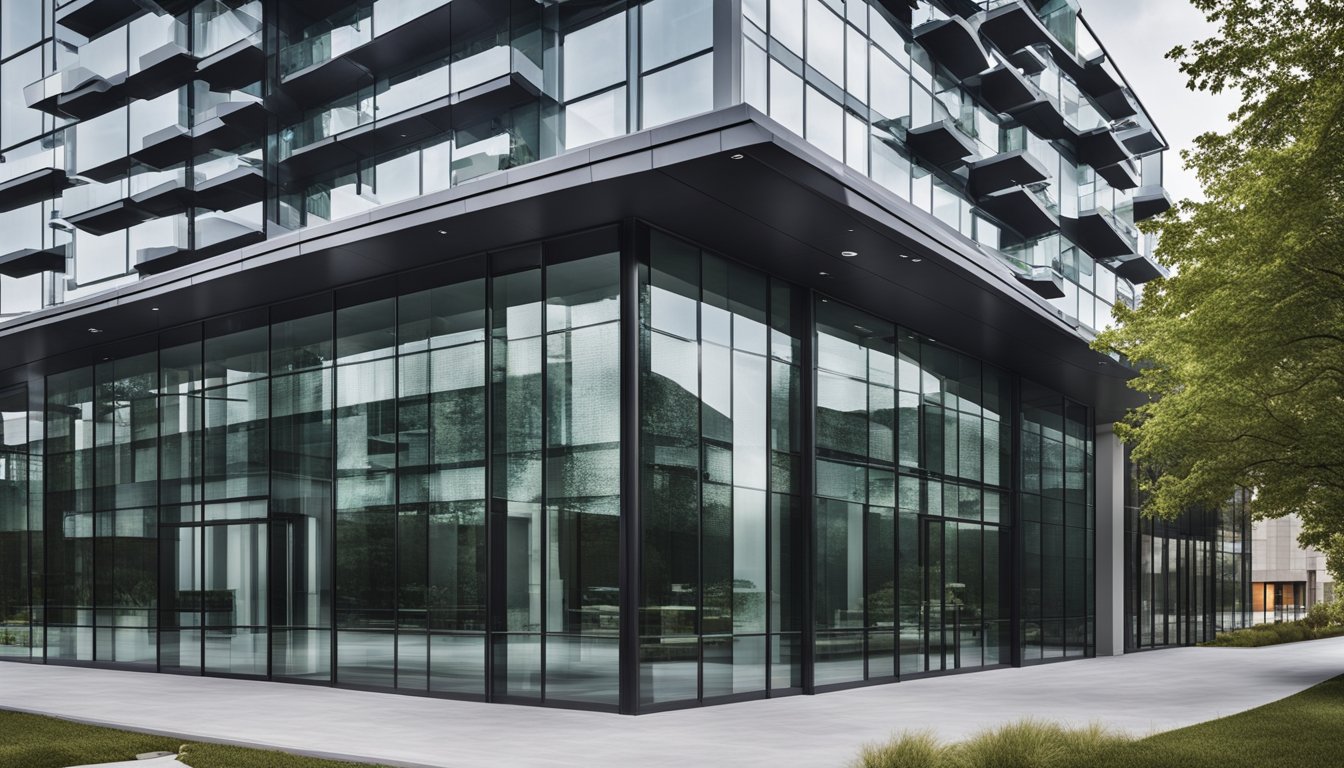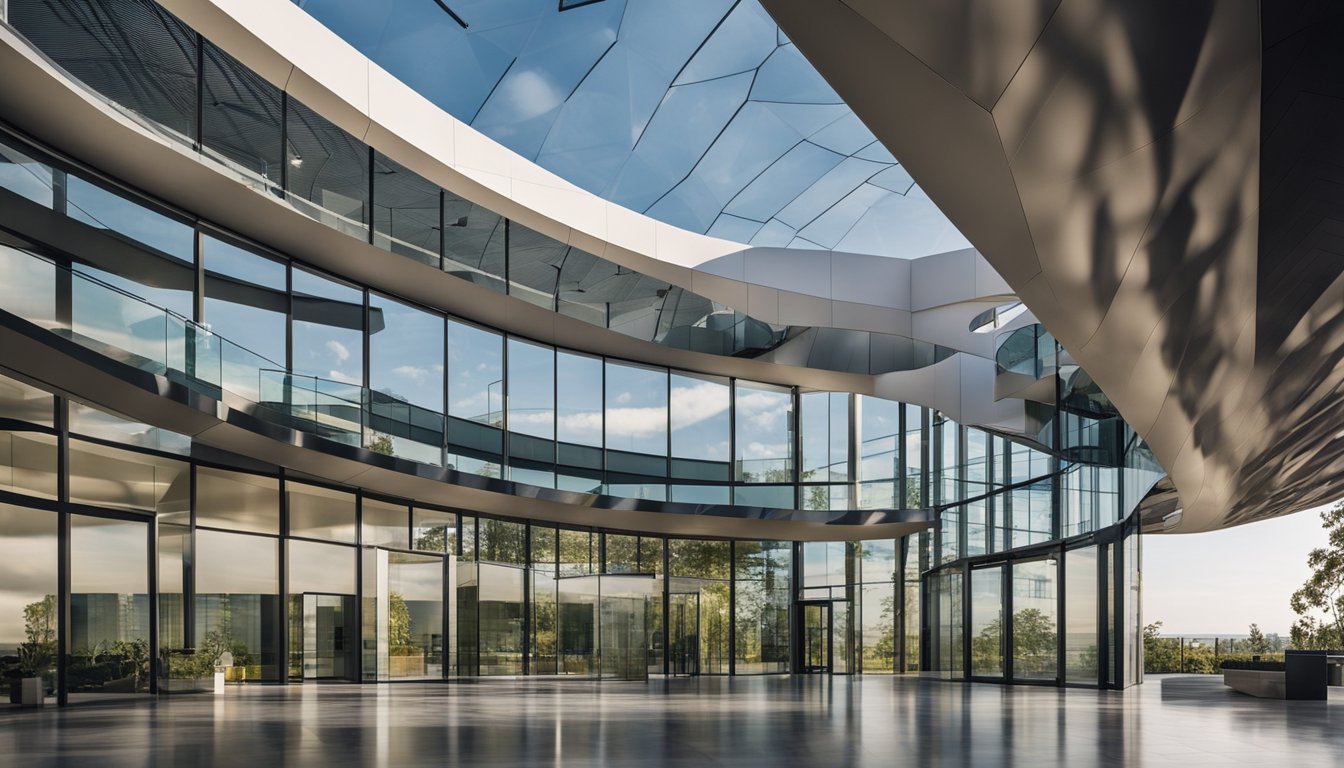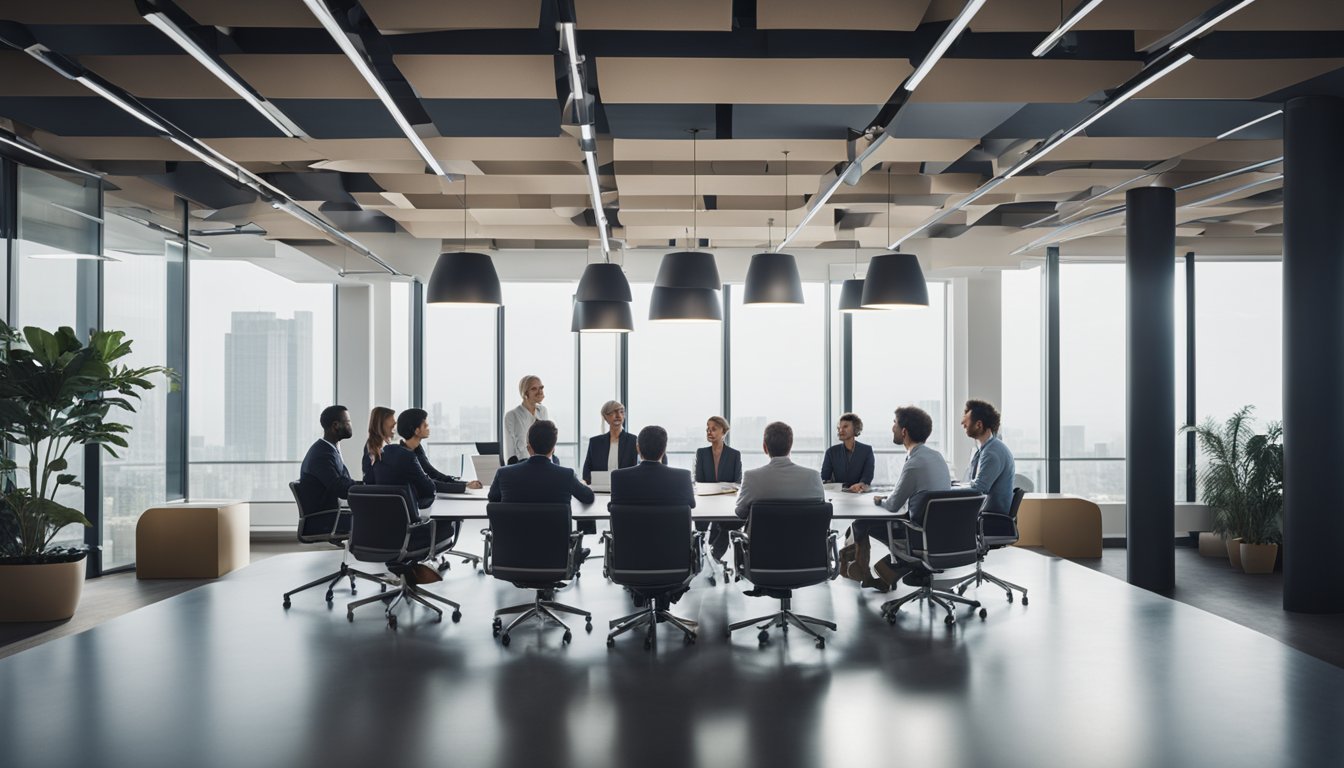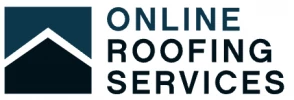Late updated: 02 Oct 2024 08:10
Written by: Oliver Bennett
Emerging Roofing Trends for UK Commercial Buildings: Innovations Shaping the Future
The world of commercial roofing is evolving rapidly, with new trends shaping the way we design and maintain our buildings. In the UK, we are witnessing a remarkable shift towards more advanced and eco-friendly roofing solutions that not only increase efficiency but also contribute to long-term sustainability. A significant trend we see is the movement towards energy-efficient systems, which help reduce operational costs and lessen environmental impact.

Emerging materials and technologies are key players in this transformation, offering innovative solutions tailored to modern commercial needs. From solar panel-integrated smart roofs to the use of green roofs that promote biodiversity, such innovations are redefining our approach to commercial roofing. Our focus is to explore these trends and understand their implications for the industry.
This blog post delves into the various emerging trends that are currently gaining traction across the UK. We'll look at how these advancements not only promise enhanced functionality but also resonate with the increasing demand for sustainability in architectural design.
Key Takeaways
- Energy-efficient roofing systems are crucial for sustainability.
- Innovative materials are reshaping commercial roofing.
- New technologies are transforming the roofing industry.
Innovative Roofing Materials and Systems

In today's commercial roofing landscape, significant innovations are shaping the industry. These advancements focus on enhancing durability, energy efficiency, and environmental responsibility.
Advancements in Metal Roofing
Metal roofing systems are experiencing a renaissance in commercial buildings. Their longevity and resilience make them an attractive choice for businesses looking to reduce maintenance costs over time. Aluminium and steel are popular due to their lightweight nature and resistance to environmental stressors.
Innovative coatings and finishes are further improving energy efficiency by reflecting solar radiation. This helps maintain cooler building temperatures and reduces the need for air conditioning. Additionally, advancements in recycling processes ensure that metal roofing remains an environmentally responsible option, aligning with sustainable building practices.
Solar Roofs and Integrated Solutions
The integration of solar technology into roofing systems is transforming energy consumption in commercial buildings. Photovoltaic (PV) panels are being seamlessly incorporated into various roofing materials, allowing buildings to generate their own electricity.
These systems offer significant advantages, such as reduced energy bills and lower carbon footprints. Furthermore, innovations in solar tiles now enable buildings to maintain aesthetic appeal while harnessing solar power. In doing so, we align energy efficiency with both functionality and design, making these integrated solutions highly attractive for businesses aiming for sustainability.
The Rise of Green and Cool Roofs
Green roofs, featuring vegetation layers, are increasingly popular in urban environments. They provide natural insulation, reducing energy consumption for heating and cooling. The vegetation also contributes to improved air quality and mitigates urban heat islands, making cities more livable.
Cool roofs, characterised by light-coloured materials with high solar reflectance, effectively decrease heat absorption. This property reduces cooling costs during summer months. Both green and cool roofing systems are pivotal in modern environmentally-conscious building design, further emphasising our commitment to sustainable and innovative roofing solutions.
Energy Efficiency and Sustainability in Roofing
In commercial buildings, energy-efficient roofing can significantly reduce energy consumption, contributing to lower operational costs and environmental impact. Sustainable roofing solutions also improve building resilience and promote long-term benefits associated with environmentally friendly materials.
Designing for Enhanced Energy Efficiency
Effective design is vital for energy-efficient roofing. Cool roofs, which reflect more sunlight, are an excellent choice for reducing heat absorption. They help maintain a cooler indoor environment, decreasing the need for air conditioning. In cooler climates like the UK, green roofs that provide insulation and absorb rainwater are an excellent choice. They can also offer natural aesthetic value and improve biodiversity.
Materials play a crucial role in energy efficiency. Roofing materials with high thermal resistance, such as reflective membranes or insulated metal panels, reduce energy loss in winter and heat gain in summer. For energy efficiency, it's also crucial to consider factors such as roof orientation and local climate impacts, ensuring that the selected solution maximises energy savings for the specific building context.
Long-Term Benefits of Sustainable Roofing
Implementing sustainable roofing solutions improves energy efficiency and offers numerous long-term advantages. One of the primary benefits is durability, as more sustainable materials tend to last longer, reducing the need for frequent roof replacements.
Sustainable roofs can also significantly decrease carbon footprints. By opting for materials that reduce energy consumption, we not only cut costs but also contribute to wider environmental goals. Reduced environmental impact often translates to financial gains through incentives or reduced taxes for green building certifications.
Finally, sustainable roofs enhance the overall building value. Whether through increased insulation, better weather protection, or improved aesthetics, they provide a return on investment that attracts eco-conscious tenants and buyers in the competitive commercial property market.
Frequently Asked Questions

In recent years, commercial roofing in the UK has evolved with new materials and technologies focused on sustainability and energy efficiency. Regulations further guide these developments, ensuring that industry standards promote environmental responsibility and safety.
What are the latest advancements in green roofing for UK business properties?
Green roofs are increasingly popular due to their environmental benefits such as reducing rainwater runoff and improving insulation. Innovations include the integration of lightweight materials and modular systems for easier installation and maintenance within urban environments.
How is solar technology being integrated into commercial roofing systems in the UK?
Solar technology in commercial roofing is on the rise, with photovoltaic panels being incorporated into existing structures. This includes advancements in solar energy storage systems that enhance electricity generation efficiency and adaptability to various roof types.
What innovative materials are now available for commercial roofing in the UK?
New materials like thermoplastic polyolefin (TPO) and ethylene propylene diene monomer (EPDM) offer durability and improved energy efficiency. These materials resist UV radiation and are more cost-effective, providing ways to address both sustainability and economic concerns.
How are roofing designs changing to improve energy efficiency in UK commercial buildings?
Roof designs now focus on reducing heat loss and enhancing natural insulation. Techniques such as reflective surfaces and upgraded thermal insulation contribute to lower energy consumption, aligning with UK energy performance standards for commercial properties.
What role does sustainability play in new commercial roofing projects across the UK?
Sustainability is central to new roofing projects, with a strong emphasis on eco-friendly materials and energy-saving technologies like green roofs and solar panels. These initiatives support long-term environmental goals and meet increasingly stringent UK building codes.
How are UK regulations influencing the development of commercial roofing trends?
UK regulations drive innovation by setting standards for energy efficiency and safety. Compliance ensures roofing projects incorporate environmentally responsible practices and materials, fostering a shift towards sustainable building designs in commercial architecture.
